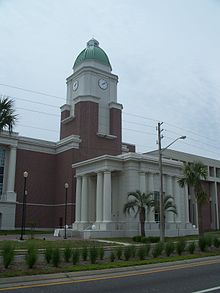Clay County FL Wildlife Removal
(Please call Clay County FL Police Department’s Animal Control Department for all your domestic animal issues, particularly “dogs and cats” at 904-264-6512)
Clay County FL Wildlife Removal • Call 904-345-1542
Let one of our Clay County FL wildlife removal experts deal with a persisting trouble caused by a dangerous creature. Some home owners would attempt to apply DIY methods but to no avail since the animals return time and again. There are many factors here like, the species of the animal, their behavior, their gender, the season, the house structure and others. Wildlife companies have years of experience handling different species on different circumstances. They already know what to do for every situation. Call us for inquiries and appointments on wildlife removal.
• Jacksonville wildlife prevention
• Fox removal specialists
• Cleaning of attic
• Clay County FL wildlife control
• Safe and cost-effective
• State licensed and insured

“GCS FL crths new02” by Ebyabe. CC BY-SA 3.0 via Commons.
Wildlife in Clay County
Clay County is comprised of 604 square miles land and 39 square miles water (6.1%). The name of the county came from Kentucky U.S. Senator Henry Clay. The place was officially founded in December 31, 1858, with some of its area originally a part from Duval County. The county provides one of the mildest and warmest climate in the country, as it becomes a popular tourist destination for in Florida. The place has a wide range of parks, hiking trails and recreational areas. These facilities include Camp Chowenwaw County Park (the county’s ‘jewel’), Clay County Fair Grounds & Agricultural Center and Knights Marina on Black Creek.
Clay County FL wildlife removal
Raccoon removal in Clay County FL
There’s a difference on the habitat of a raccoon from wildlife and the raccoon living in the city. For wild raccoons, their shelters in the forest are mostly burrows that have been left by a fox, gopher or woodchuck. This can be a log or a hollow of a big tree. The city raccoons on the other hand will use a bench, wood pile or a culvert as their den. The crawlspaces and vacant rooms of houses can also be used as a raccoon den.
Skunk removal in Clay County FL
Skunks only become sexually active after the winter months which are around early February to late March. The mother skunks usually have 4 – 8 baby skunks, born around late May to June. Pregnancy of female skunks usually takes 8 to 10 weeks. The young skunks born don’t have a lot of fur, but will already have the distinct black and white hair common to North American skunks. The white hair can be dotted, pinned, striped and lined with a variety in patterns. A young skunk can take nine to ten months to grow into a full adult skunk.
Fox removal in Clay County Florida
The bat eared fox is just one of the foxes in South America’s subspecies paraphyletic group. In North America, the fox species called ‘true fox’ is the Vulpes genus which is within the monophyletic line.
Call 904-345-1542 for inquiries
Other Clay County FL wildlife services
Green Cove Springs FL wildlife removal | St. Johns County FL wildlife removal | Fernandina Beach FL wildlife removal
River rat removal in Clay County
Also known as nutria, the river rats are rodent-like species that feed on water stems and plants. It closely resembles a large sized city rat, with some variants that look similar to a beaver though a shorter tail. It has a dark brown coarse fur, with grey soft under fur. A distinct trait of the animal is the white patch on its muzzle and yellow (or orange) incisors. Unlike true rats, river rats have a webbed hind feet it uses in swimming.
Deer removal in Clay County
There are specific terminologies on the different gender, size and group of the wildlife animal deer. For instance, the female is called ‘doe’, while the male deer is called ‘buck’. A large sized deer can be called ‘stag’, though in some region or dialect it can also be called ‘cow’ and ‘bull’. A male deer around five years old is usually called ‘hart’, while a female deer that is around three years old is called ‘hind’. A small deer can be called ‘fawn’, with larger sized can also be called ‘calf’. A young deer below three years old is generally called ‘kid’. When you see a group of deer in Clay County, it is called ‘herd’.
We also have experts for decontamination, animal carcass removal, remove old insulation, deer removal, house restoration, honey bees removal, and install new insulation and attic clean up.
We also provide wildlife removal of squirrels, bats, opossums, snakes, honey bees, deer, coyotes, wild hogs, birds, raccoons, nutria, armadillos, moles, foxes, bees, river rats.
Wildlife control services near Clay County Florida:
Palm Coast FL wildlife removal | Lakeside Florida wildlife removal | Lake Asbury FL wildlife removal | Squirrel removal in Jacksonville Florida | Raccoon removal in Atlantic Beach FL | Bat removal in Alachua County Florida
32068, 32043, 32091, Green Cove Springs, Keystone Heights, Bellair-Meadowbrook Terrace, Clay Hill, Doctors Inlet, Fleming Island, McRae, Orange Park, Penney Farms, Oakleaf, Virginia Village, Lake Asbury, Belmore, Hibernia, Lake Geneva, Lakeside, Middleburg.
Contact us for all your wildlife removal requirements in Clay County Florida.
Clay County FL wildlife removal
First Coast Wildlife
904-345-1542
